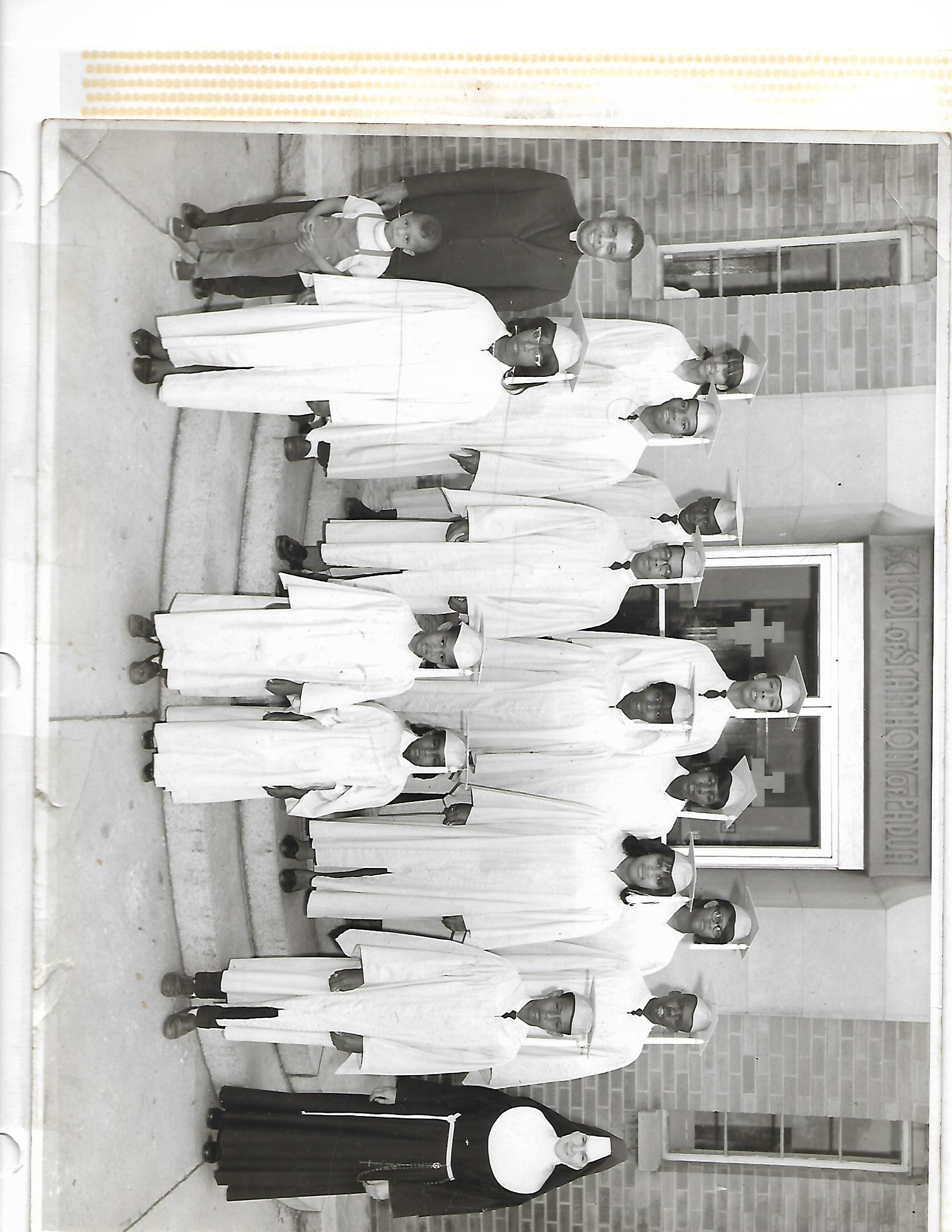

Angela Anderson
During the year of 1934, the Franciscan Order sent Father Ronald Scott on a mission to establish a Black Catholic parish in Asheville, North Carolina. St Anthony of Padua Catholic Church & School opened its doors in 1936, in the heart of the Black community in south Asheville, N.C. For two generations of over 100 families, the Franciscan priests and nuns spiritually nurtured and taught this tight knit community. The academic rigor of the school excelled that of its neighboring school systems.
The Catholic Diocese followed alongside the federal mandate for school integration, and in 1968, St Anthony’s School closed its doors, forcing its students to attend the public and/or previously all white schools. St. Anthony’s students faced a double jeopardy, as their academic stewardship and self-discipline exceeded any and all expectations of their new racially-tense environment. This new experience was in opposition to their foundational belief in God, family, love, acceptance and forgiveness; and was almost too much for a child to comprehend...despite living in the lingering Jim Crow South!
At that time, the Church was under the leadership of a black priest, Father Joseph Lawson Howze, who was reappointed as pastor to the all-white St. Lawrence Church (now Basilica) in Asheville. The St. Anthony’s parishioners followed him there as the two churches merged. Despite this being another house of God, not all of the St Lawrence family welcomed them willingly. In fact several were visibly hostile! Father Howze was a highly respected and formidable leader, and over time, was successful in uniting the congregations. He was later appointed in 1977 as Bishop of the new Diocese of Biloxi Mississippi. Bishop Howze passed away in 2019 at the age of 95.
The lives of the families of St Anthony’s Church and School have evolved as expected throughout the decades. Many have continued to practice Catholicism and have educated their children in Catholic schools across the country; many have not. Most have led productive and prosperous lives in the spirit of faith. Regardless, many of the families have remained connected as evidenced by a well-attended reunion held at St. Lawrence Basilica (now a historical landmark) in 1999. As one of the alumni stated, “St Anthony’s was one of the best things that ever happened to Asheville.” All agreed.